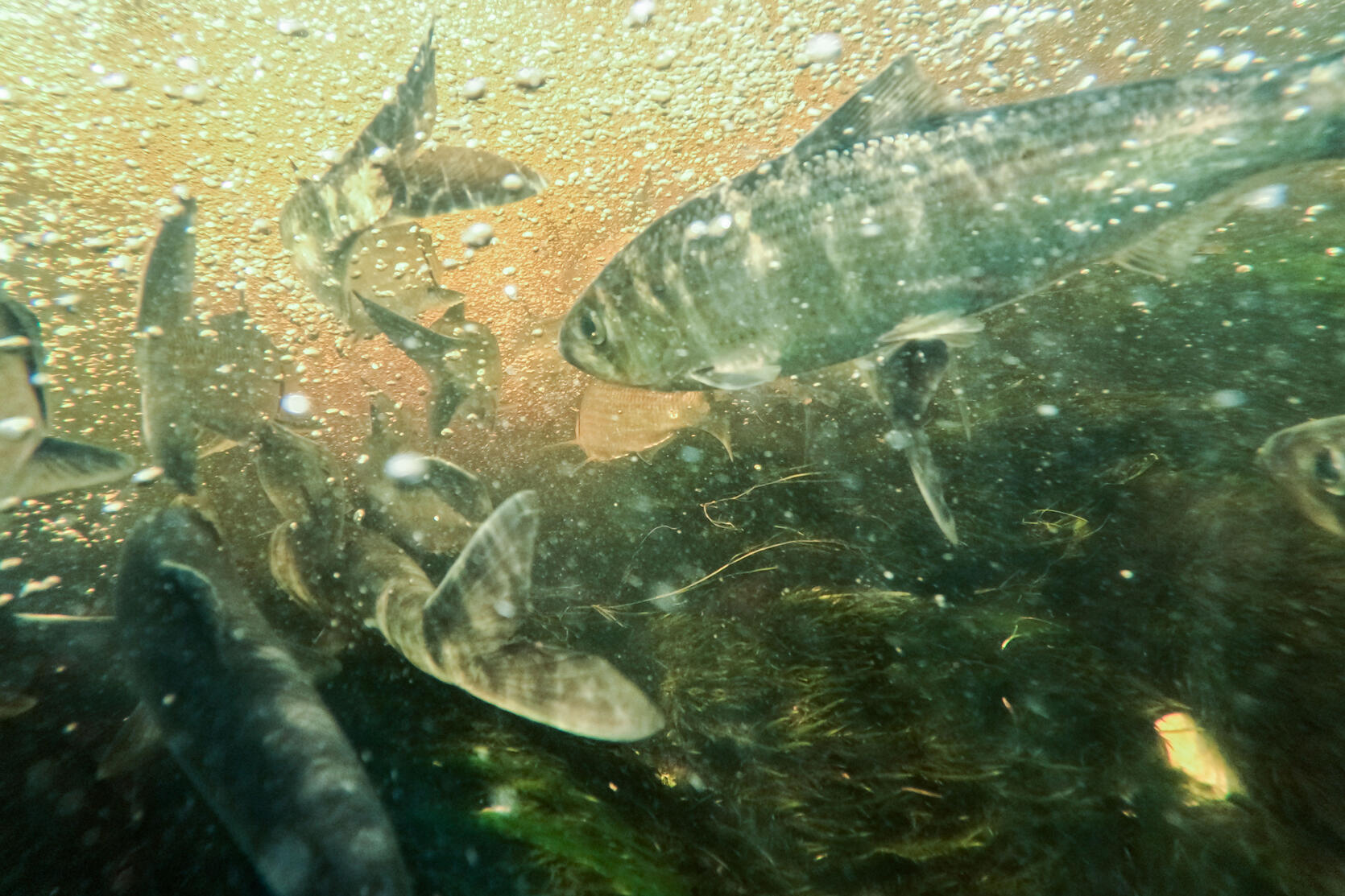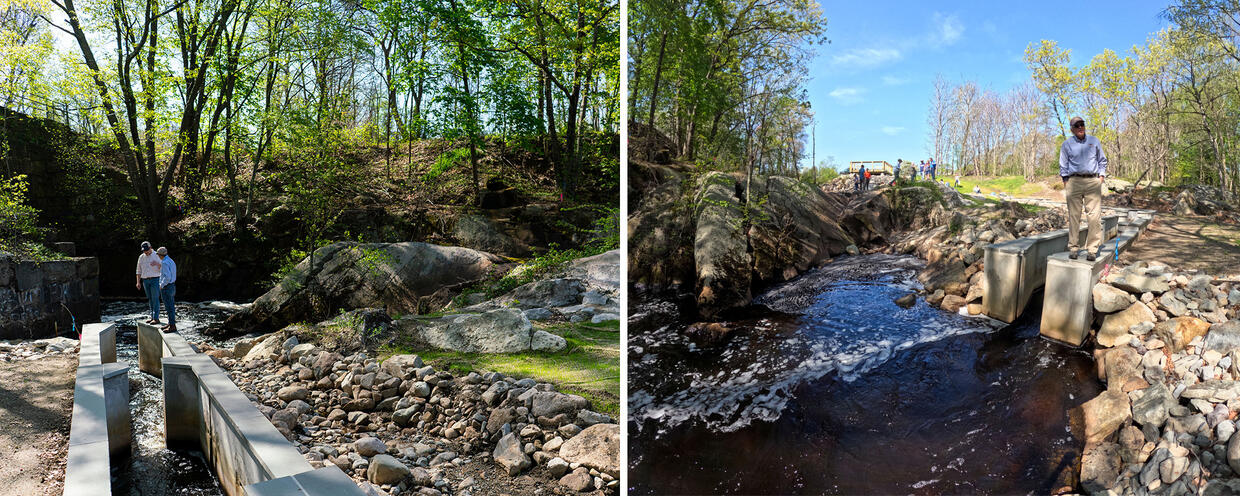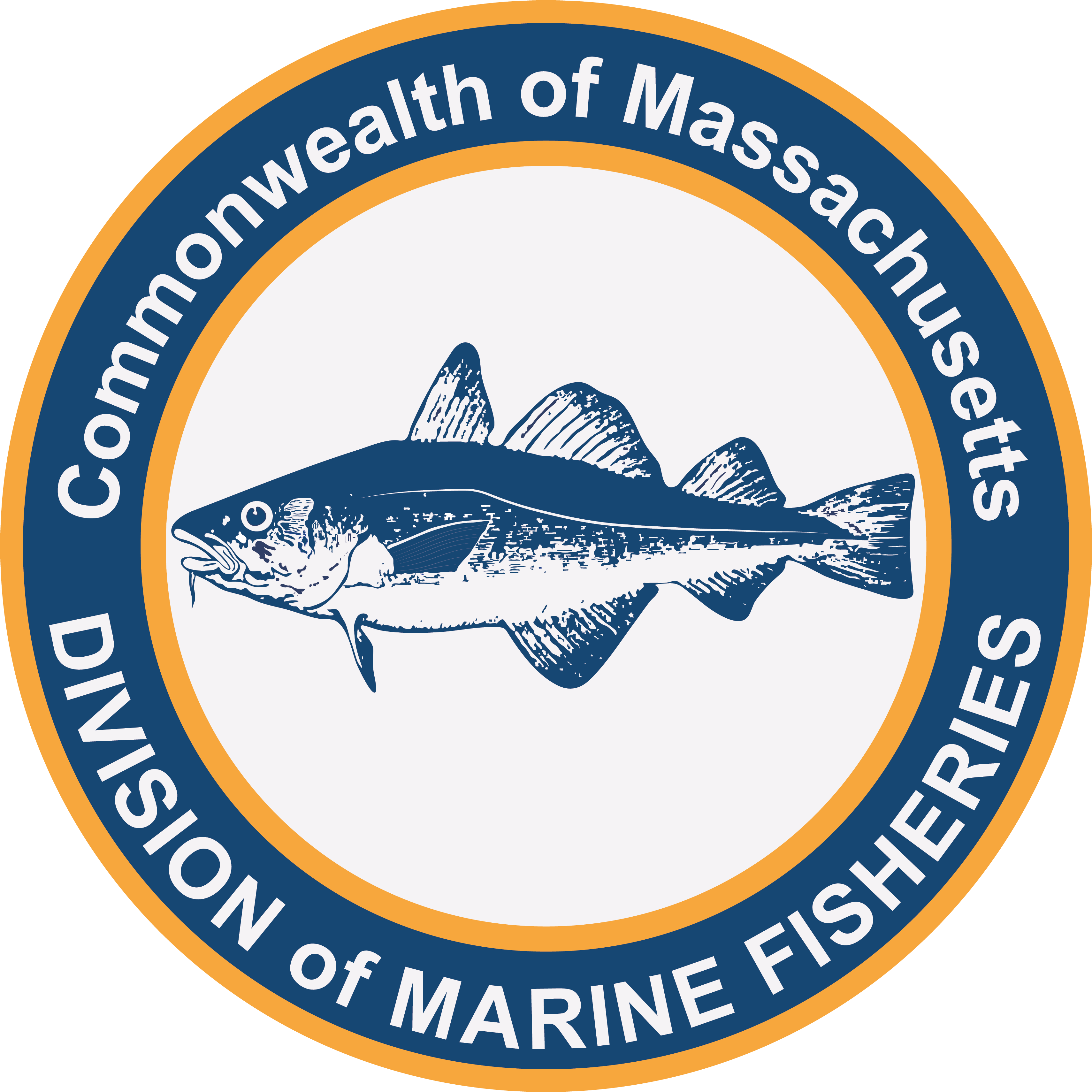- Division of Marine Fisheries

Diadromous, or sea-run fish, are the migratory fish that switch between marine and freshwater habitats to complete their life history. Most diadromous fish populations have declined sharply from historical periods when valuable fisheries were supported. Presently, minor fisheries occur for a few diadromous species and collectively these fish remain important forage for a wide range of fish and wildlife. The DMF Diadromous Fish Project constructs and repairs fishways and actively monitors river herring, American shad, American eel, and rainbow smelt spawning runs in coastal rivers to contribute to population assessment and management of these species and to inform restoration planning. After another busy spring season, we offer the following updates and highlights.
River Herring Counting Workshop
DMF hosted a river herring counting workshop at our New Bedford office on March 12, 2025. A year prior, DMF held a workshop on technical aspects of river herring counting with a small group of agency and local staff who manage counting stations. This time, we opened up the workshop to a larger group of volunteers and interested parties to share lessons learned, thank the many volunteer counters, and look to the future. With over 45 river herring counting efforts in coastal Massachusetts in recent years, interest was strong and the workshop attracted over 60 attendees who dug into the methods of volunteer visual counts and electronic and video counting. As part of this process, the Diadromous Fish Project prepared a guidance document on the three counting methods for publication in the DMF Technical Report Series.
Fish Passage Restoration
DMF’s Q2 & Q3 2024 Newsletter reported on four large cooperative fish passage restoration projects under construction at that time. These projects remain in the news as regionally important diadromous fish restoration projects that either were completed since last fall or close to completion with positive related news from this spring’s spawning run.
South River, Marshfield. An ongoing Town of Marshfield construction project on the South River removed a former mill dam and is building a nature-like fishway in its place to pass fish over the elevation rise at the Veterans Memorial Park. To allow work to continue during the spring river herring migration, a uniquely designed, temporary bypass channel was constructed through the park. To mitigate the inherent risk of shutting down the mainstem passage route, DMF’s crew conducted weekly flow and depth measurements and looked for fish presence and egg deposition. These observations led to the addition of in-stream rock weirs to slow water velocity at key locations. Project goals and results were affirmed by the fish! A large movement of river herring moved through the bypass channel during the first week of May, reaching areas previously blocked to the species for 400 years.
Sesuit Creek, Dennis. Two culverts at Rt. 6A in Dennis on Sesuit Creek were replaced this winter under contract with the Massachusetts Department of Transportation. The prior culverts were undersized and prone to clogging with sediment, riprap stones, and Phragmites stems. These conditions routinely caused fish mortality from impingement and excessive predation mortality. Town of Dennis and DMF staff visited the site this spring and found no evidence of fish mortality as herring passed freely through the new culverts. Much appreciation is due to MassDOT for investing in this regionally important fish passage and transportation infrastructure site.
Stony Brook, Brewster. The Town of Brewster is working with the National Resources Conservation Services and Cape Cod Conservation District to rebuild the fishway at Stony Brook. This iconic mill site is one of the most visited “herring parks” in Massachusetts, with generations of families holding fond memories of seeing herring at Stony Brook. Construction started this past winter with four of the concrete in-stream weirs in the fishway being completed and will continue after the spring run to complete the project. The herring passed well through the new weirs, as the run experienced an above average count of about 200,000 fish this spring.
Fore River Watershed, Braintree. We reported last fall on the completion of the cooperative restoration effort to open passage for diadromous fish in the Fore River watershed. Two dams were removed and fishways installed at the Great Pond Reservoir and Rock Falls, giving migratory fish a chance to advance upstream to the native, 180-acre Great Pond spawning habitat for the first time in about 225 years (based on historic fishery records related to dam construction). Anticipation was high this spring to see how river herring would respond. Our crew first saw river herring at Rock Falls on April 30, and by the time that the Town of Braintree held its first river herring celebration on May 3, herring sightings were being reported throughout upstream locations. We watched hundreds of herring aggregate in the Cochato River and spawn in the stream along fairways at the Braintree Municipal Golf Course, to the surprise and thrill of golfers and citizens of Braintree. These fish represent pre-restoration recruitment, and the expectation is that the numbers of fish can only go up. Much appreciation is due to the Town of Braintree, Division of Ecological Restoration, NOAA Restoration Center and other state and federal partners who supported this long-term restoration effort. Recognition is also due to the less-known contribution of years of manual labor reclaiming the stream channel from debris jams, wetland plant overgrowth, and tree falls by the DMF Fishway Crew and super-volunteer, Mike Richardi.
Diadromous Fish Monitoring
While data from this spring’s counting stations are not yet fully processed, overall, the runs seem to have mixed results. Counts will be finalized later this year, but from preliminary data, the Herring Brook in Pembroke, the Monument River in Bourne, and Stony Brook in Brewster are three runs with electronic counts expected to post higher than average counts in 2025.
There is good news for monitoring of other diadromous fish species. Glass eel monitoring continues to show a recent trend of elevated counts at our monitoring stations. This trend began in 2023 and at least two sites will greatly exceed time-series highs in 2025. While rainbow smelt are a species that may struggle with climate change in Massachusetts, the Fore River smelt fyke net posted one of the highest catch-per-effort for smelt this spring in a 20+ year time series. Finally, the USFWS Attleboro Hatchery has been stocking American shad in the Taunton River since 2022 in a cooperative effort with DMF and DFW. This spring would have been the first year that spawning adults could have returned from the 2022 stocking. DMF and USFWS biologists have been angling to collect genetic samples this spring to confirm the origin of spawning run shad. Catch-per-effort has been high so far this spring. Stay tuned for genetic results and future recruitment to a potential new shad sport fishery in the Taunton River.
By Brad Chase, Diadromous Fisheries Project Leader

